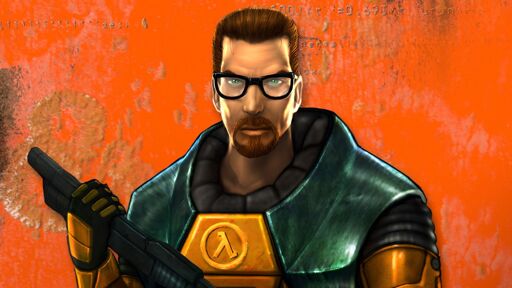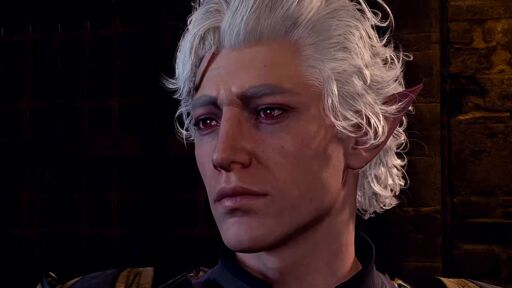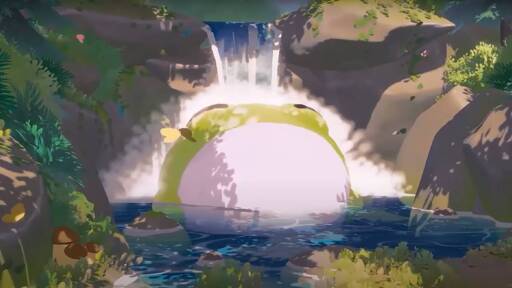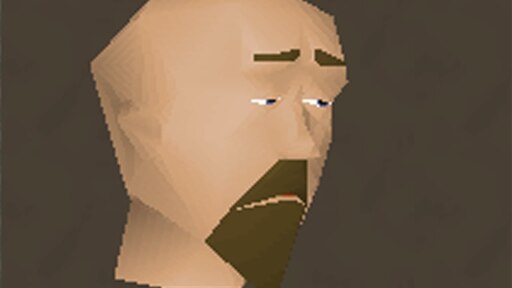

Agent Karyo
MJ12 Detachment Agent
- 370 Posts
- 501 Comments


You definitely need a little bit craziness and unpredictability to make a truly landmark game.
This might be an unpopular opinion, but I think truly good games (the ones that go down in history) need a certain amount of jank. Not jank for jank’s sake, but because something new, that makes you go “wow”, cannot have the same true and tried game design/gameplay approaches that have been done before.
Just look at the classics, they are considered milestones, but they have a lot of issues:
- F01 / F02 - It is very easy to mess up your build, but the flip side of this is you have a living world where you can play as a slaver, play as a character with development disabilities and discover a whole new approach. Even if you’ve played the game many times and are comfortable with older CRPGs, the early game can be a slog. I find I constantly have to kite and use cheese tactics in the first ~20% of the game.
- VTMB - Combat was generally subpar, especially if you went with weapons. Many abilities/skills were unbalanced. Late game was subpar.
- Deus Ex - Early to mid-game combat is a bit of a slog and considered unpolished by modern standards (but the flip side is that you feel the progression). Some of the stealth gameplay can feel a bit cheesy. I would argue weaponry is unbalanced. Arcanum - Picking the industrial direction resulted in much more tedious and difficult gameplay than going with magic. Both real-time and turn-based combat was shit.
- Morrowind - For some of the quests, I literally had to almost try a “point and click adventure” approach to figure out how to complete it. I was never a fan of the combat in Morrowind.
And yet I strongly prefer this approach (and modern versions such Space Wreck, Age of Decadence, Colony Ship, Consortium, New Vegas, UnderRail) to Obsidian’s recent output (let alone Bethesda with Starfield and Fallout 3).


This is a very naive and ignorant take. In the major cities, quality of life is on part with EU for many.
Furthermore, even with demographic splits (e.g. russians aged 18-24, urban russians), all major demographic groups show at least strong majority support for chauvinism, authoritarianism and genocidal imperialism.
There are some variations of course. But it’s more along the lines of overwhelming/near absolute majority support (e.g 50+) or strong majority support (18-34). You also find interesting variantions where “middle age” segments tend to be less supportive (on a relative basis, the segment as whole still shows strong majority support) of genocidal imperialism than young adults/early middle age (18-34); likely because they have more to lose.
Russians have the capability to build a better future for themselves (without invasions), they just don’t want to because they haven’t gotten a taste of their own medicine (where they are treated like they treat others).
EU is massive in enabling this attitude. Consider the fact that Merkel, even from retirement, is promoting russian genocidal imperialism by claiming that Poland and the Baltic nation are responsible for the full scale invasion:
https://www.telegraph.co.uk/world-news/2025/10/06/angela-merkel-poland-baltics-blame-ukraine-war/
When it’s the russians and putin (a symptom, with the cause being russians) who are to blame for their own invasion.


From the article:
For context, Steam currently doesn’t allow direct purchases by Russian players, in accordance with western sanctions, so Russian buyers have to make use of workarounds such as third-party key resellers.
Btw, I knew this before reading the article. Do a web search around how these workarounds operate (the example cited by RPS isn’t the only one).


I respect your reasoning and I agree that it would massively increase piracy in russia, but remember, russia is sanctioned; Valve isn’t supposed to be selling to russians in the first place.
Disagree on impact on global piracy rates. Pirated games were widely available via public russia sources such as rutracker.org.
You don’t even need to know russian as all titles have english headings.
Here is a link to Vampire Bloodlines 2, originally release on October 21st, with consistent updates since then, last one being on November 18th:
https://rutracker.org/forum/viewtopic.php?t=6761118
You don’t need to speak russian to figure out what “magnet-ссылке” with a magnet icon refers to.


I strongly disagree, the Workers & Resource DLC link can provide some insights on this; russian language reviews talk about “getting salo for the Ukrainians” and whataboutism about Palestine (like they care about Palestine, if anything most russians tend to support Israel). There is lots of anti-Ukrainian, pro-invasion russian language commentary on Steam.
We’ve lived in russia as an expat family for many years, we left as soon as our finances allowed us to (this was was before the russians invaded Georgia in 2008).
Then there is broader research on russian support for the full scale invasion; even using demographic splits (e.g. people aged 18 to 24, highly educated russians, high income russians), all demographic segments show at least majority support for the full scale invasion (with almost all segment groups showing at strong majority support and very commonly overwhelming majority support).
With respect to arguments that “people are afraid to show their true views”; there are multiple research pieces that specifically account for preference falsification. Some russians do hide their preferences, but this group is so small that even with preference falsification adjustments you have a strong majority support (65%+) for the full scale invasion. That’s specifically the full scale invasion (i.e. 2022), with respect to the annexation of Crimea, preference falsification was found to be not statistically significant with the respect to the baseline ~85% support for the annexation of Crimea.


So Valve does not accept money from russian users directly (the roundabout methods are well known by russian users and Valve does nothing in this case even though it acts against similar methods when publishers make the call), so why would they even care what Roskomnadzor says? What can Roskomnadzor do to Valve?
I will note that Valve also does nothing about genocidal imperialist russian reviews on this DLC for support of Ukraine in Workers and Resources:
I’m from Donetsk. We have been bombarded since 2014 by the state in which I was born and lived. Declaring us enemies of the people. I am for the Russian SVO. Buy a dls only because of the Zaporizhia NPP, it is well made <3
You can check the number of civilians deaths in Donbas in 2014 vs 2022 to present and look at what happened to cities like Bahmut during the russian invasion. Not to mention the 1.5 million Ukrainians who had to leave just in 2014 (including my family members).
And yet we have to hear faux-libertarian polemics about alleged belief in “freedom of speech” and arrogant gibberish about “I am a free speech absolutist!” from individuals who know nothing about the value of free speech.
I said it before and I will say it again, American companies cannot be relied upon as a source of digital services. Both for systematic reasons (submission to the local oligarch/criminal regime) and philosophical reasons (a culture of ignorance and lack of desire to go beyond theatrical proclamations about freedom of this or freedom of that).
Let’s say you think I am being uncharitable in my attitude. Then tell me, why does Valve even read notices from Roskomnadzor (not to mention implementing their orders)? Russia is sanctioned and they are not supposed be able to make purchases at all. And yet Valve feels the need to follow orders from Roskomnadzor. What’s the logic here?


Microsoft is a criminal organisation that thrives on corruption (no real action being taken with respect to anti trust proceedings is still relevant today).
Crime isn’t only about someone stealing your phone, extracting many billion of dollars via oligopolistic methods of limiting competition and leaving people with no other option than to use their products (irrespective of price or feature considerations) is also criminal activity.
They are not going to fight the US administratorion on this.


“Boomer shooter” refers to old school FPS/shooters in the sense of boomer = old? Never knew that.
I always thought it was because of the more fast paced styles of the older games and emphasis on explosive weapons.
Most people who played Doom / Unreal / Hexen when the games were released were early millenials or tail end “Gen X”. From memory, FPS games weren’t really that popular among people in their 30s and early 40s in the 90s. It was all young kids, teenagers and (I am assuming) university students.


Office applications (Excel, Powerpoint, PowerBI, Word) is one area where I can’t have any friction at all, since that’s how I get my income. I need the latest version of these applications for desktop, web version does not cut it and Linux emulation seems very spotty unless you are OK with using a much older version of office like 2013/2016.
That just on the Microsoft side, there is also Tableau desktop, some Adobe applications and even open source Windows applications that I rely on that don’t have native Linux versions (Notepad++, Paint.net).
I am planning to buy a new laptop, might be worth trying to switch to Linux on the laptop and experiment with emulated Office solutions (while always having a reliable fallback on desktop).


You can continue getting updates for Window 10 for free and they don’t really add new software to Windows.
Microsoft Office and lots of line of business apps (e.g. I prefer Tableau desktop over the web version) require Windows. Many game (not only multiplayer ones) continue to have issues with Linux (although there have been massive improvements in the last ~5 years).


Does Genshin allow you to play as Winnie the Pooh (doesn’t have to be the US version, the Fyodor Khitruk version looks cool too)?

 English
English- •
- store.steampowered.com
- •
- 2M
- •

 English
English- •
- massivelyop.com
- •
- 2M
- •

 English
English- •
- www.gamingonlinux.com
- •
- 2M
- •


This short discussion thread has feedback from a person who tried the latest demo and they were impressed.
I tried the demo from late last year and I thought it had potential. I liked the setting and the customization options.

 English
English- •
- www.pcgamer.com
- •
- 2M
- •

 English
English- •
- www.pcgamer.com
- •
- 2M
- •

 English
English- •
- www.gamingonlinux.com
- •
- 2M
- •


I played Legacy for an hour purely out of curiosity. It was absolute shit. Boring, uninspired, “worst of mobile” gameplay, generic visuals, multiplayer tacked on in a way that doesn’t enhance the gameplay. I will speculate they simply repurposed the Legacy engine for Masters of Albion.
It’s almost certainly going to be terrible.
If you want a business sim, you would be far better of looking at the Capitalism series, Industry Giant 2 (it holds up pretty even after 20+ years) or perhaps Big Ambitions.


For sure, I missed that (and the fact Valve seems to be deploying protections as well).
The commentary about Windows Defender was just a random remark in passing. I wasn’t expecting the WinRAR zero day to be addressed (it’s a zero day after all), but the malware itself (the Monero miner) was around for a while (current version at the time was at least a year old) and WD had zero protections against its methods (that did not use the WinRAR zero day, that was the entry point).
That being said, I do think this more of an edge case. WD works pretty well in my experience (especially for non-power users).


I didn’t know that Windows Defender essentially blocked the vulnerability.
I will also note that there can be situations when Windows Defender doesn’t work.
I got hit by a WinRAR zero day exploit (the archive was supposed to be just images) that installed master Monero minor that disabled Windows Defender and blocked installation of other tools. I was able to clean my computer, but I only found through a non-english site (and I happen to speak that language so it was easier to validate that it was legit).


He knew how to make good games back in the day, he doesn’t any more or simply doesn’t care.
Masters of Albion seems to be largely based on his previous game, Legacy, which was a crypto/NFT scam (selling virtual land based on speculative pitch that the tokens would make mad real world money).
I tried Legacy for an hour (just out of curiosity), it’s shit. Almost feels like a low effort game to justify the pump and dump in-game land sale.

 English
English- •
- www.pcgamer.com
- •
- 2M
- •

 English
English- •
- www.gamesradar.com
- •
- 2M
- •

 English
English- •
- www.gamingonlinux.com
- •
- 2M
- •

 English
English- •
- www.rockpapershotgun.com
- •
- 2M
- •

 English
English- •
- www.pcgamer.com
- •
- 2M
- •

 English
English- •
- www.pcgamer.com
- •
- 2M
- •

 English
English- •
- www.pcgamer.com
- •
- 3M
- •

 English
English- •
- www.rockpapershotgun.com
- •
- 3M
- •

 English
English- •
- www.rockpapershotgun.com
- •
- 3M
- •

 English
English- •
- automaton-media.com
- •
- 3M
- •







































A c/pcgaming and c/games UT2004 server would be a lot of fun!